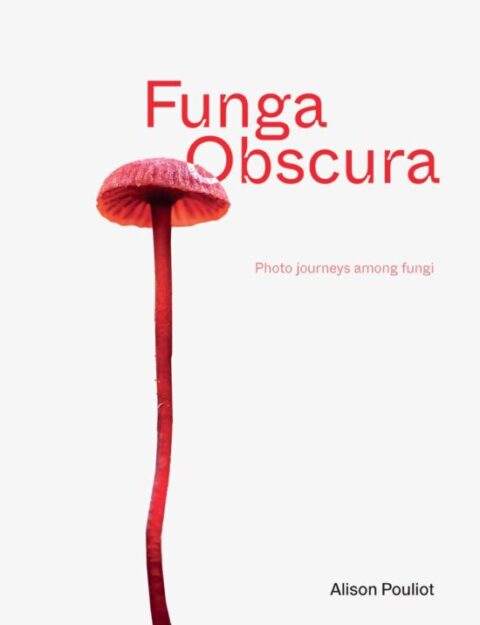Funga Obscura (NewSouth, 2025) by Alison Pouliot is an extraordinary exploration of the hidden kingdom of fungi, presented through a unique combination of evocative writing and stunning photography. Pouliot takes us on a journey not just across the world but through time itself, beginning with the origins of life on Earth. Her narrative is a masterful blend of science, art, and personal discovery, making the book a truly immersive experience.
The author’s journey spans some of the most remote and awe-inspiring places on the planet. From the high glacial Alps of Switzerland to the remote deserts of Australia, and from Finland’s forests to long abandoned, rusting shells of cars discarded by humans, Pouliot shows us fungi thriving in both the most inhospitable and the most mundane of settings. Each location she visits becomes a character in its own right, contributing to the rich tapestry of her narrative. Her ability to find beauty and life in unlikely places underscores the resilience and adaptability of fungi, while also inviting readers to reconsider their own relationship with the natural world.
What truly sets Funga Obscura apart, however, is the breathtaking quality of Pouliot’s photography. Each image tells its own story, often capturing a world that remains unseen by most of us. The textures, colours and intricate details of the fungi she photographs are nothing short of mesmerising. In fact, her photographs are so striking that they could stand alone as a visual narrative – yet, when paired with her words, they elevate the book into an entirely new realm. Pouliot’s prose is as vivid as her photography and, together, they work in harmony to transport the reader into the fungi world in a way that is both educational and profoundly moving.
What also stands out in this book is Pouliot’s ability to connect the science of fungi with a broader environmental and philosophical perspective. She not only educates the reader about the fascinating biology of fungi but also inspires a deeper appreciation for their ecological importance and their often-overlooked role in sustaining life on Earth. Her writing bridges the gap between scientific accuracy and poetic storytelling, making complex topics accessible and engaging for a wide audience.
Reading Funga Obscura is an overwhelming experience in the best possible way. As a reader, you can’t help but feel awe-struck by the beauty she captures, both through her lens and through her words. The book is a reminder of the incredible intricacy and interconnectedness of the natural world and a call to pay attention to what often goes unnoticed. It’s rare to find a book that not only informs but also stirs such profound emotional responses.
While there is little to critique about this masterpiece, you could say that its sheer scope and depth can feel almost too rich to absorb in a single sitting. Yet, this is also what makes it so rewarding – it’s a book you can return to again and again, each time discovering something new.
In conclusion, Funga Obscura is a tour de force that celebrates the beauty and complexity of fungi while challenging readers to look more closely at the world around them. Alison Pouliot has crafted a work that is as educational as it is inspiring, as artistic as it is scientific. This book is a must-read for anyone interested in nature, photography or simply seeking to be reminded of the wonders of life on Earth.


